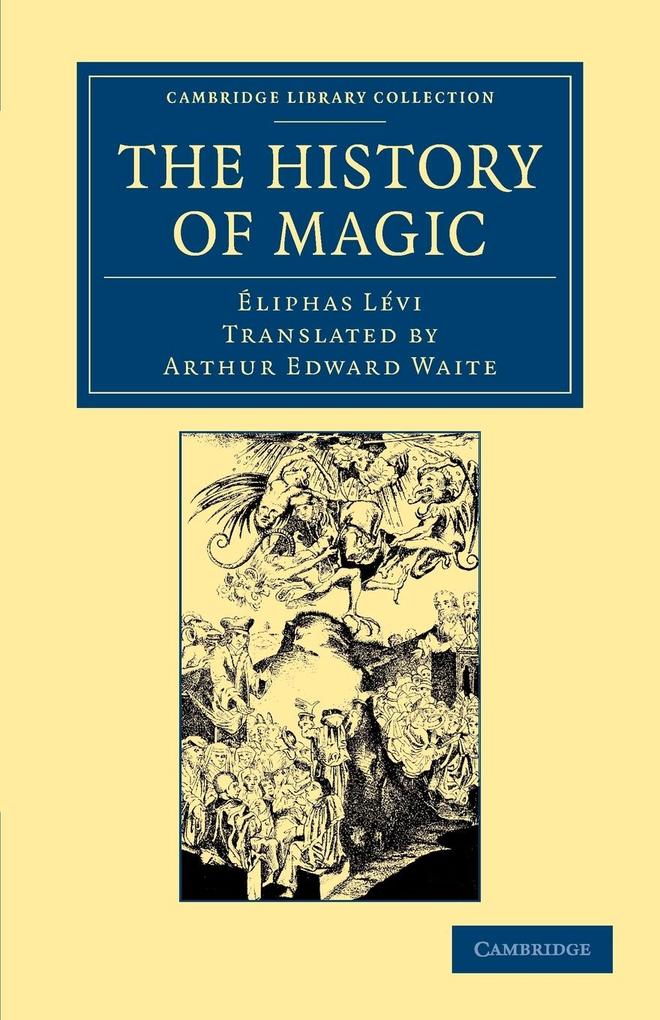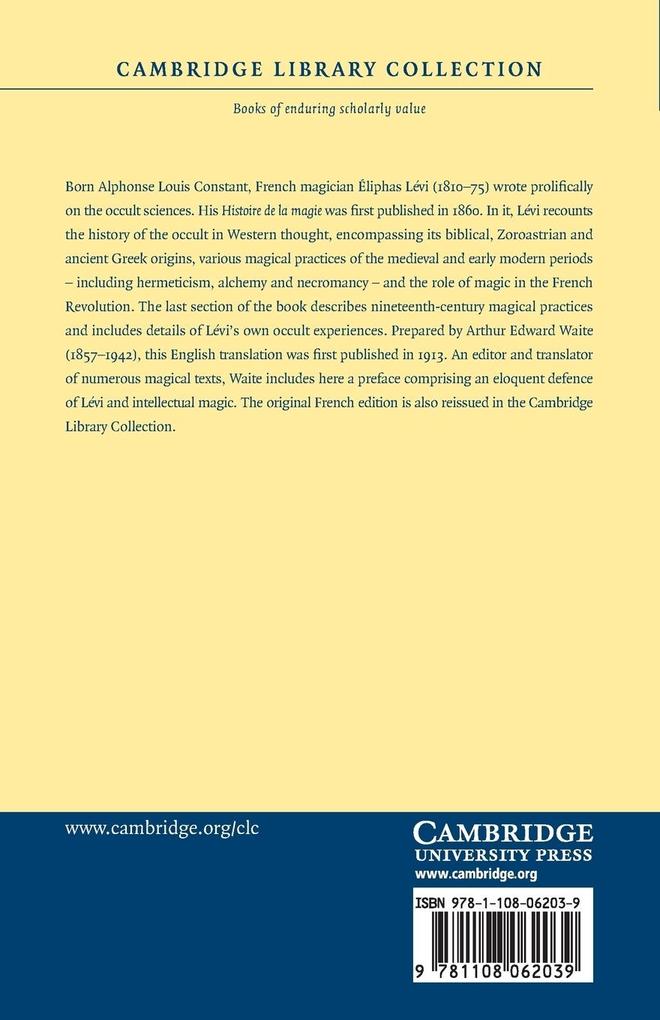
Zustellung: Di, 15.07. - Fr, 18.07.
Versand in 5 Tagen
VersandkostenfreiTranslated into English in 1913, this book traces Western magic from its ancient origins to the nineteenth-century occult revival.
Inhaltsverzeichnis
Preface to the English translation; Introduction; Part I. The Derivations of Magic: 1. Fabulous sources; 2. Magic of the magi; 3. Magic in India; 4. Hermetic magic; 5. Magic in Greece; 6. Mathematical magic of Pythagoras; 7. The holy Kabalah; Part II. Formation and Development of Dogmas: 1. Primitive symbolism of history; 2. Mysticism; 3. Initiations and ordeals; 4. The magic of public worship; 5. Mysteries of virginity; 6. Superstitions; 7. Magical monuments; Part III. Divine Synthesis and Realisation of Magia by the Christian Revelation: 1. Christ accused of magic by the Jews; 2. The witness of magic to Christianity; 3. The devil; 4. The last pagans; 5. Legends; 6. Some kabalistic paintings and sacred emblems; 7. Philosophers of the Alexandrian schools; Part IV. Magic and Civilisation: 1. Magic among barbarians; 2. Influence of women; 3. The Salic laws against sorcerers; 4. Legends of the reign of Charlemagne; 5. Magicians; 6. Some famous prosecutions; 7. Superstitions relating to the devil; Part V. The adepts and the priesthood: 1. Priests and popes accused of magic; 2. Appearance of the Bohemian nomads; 3. Legend and history of Raymund Lully; 4. On certain alchemists; 5. Some famous sorcerers and magicians; 6. Some magical prosecutions; 7. The magical origin of Freemasonry; Part VI. Magic and the Revolution: 1. Remarkable authors of the eighteenth century; 2. Thaumaturgic personalities of the eighteenth century; 3. Prophecies of Cazotte; 4. The French revolution; 5. Phenomena of mediomania; 6. The German illuminati; 7. Empire and restoration; Part VII. Magic in the Nineteenth Century: 1. Magnetic mystics and materialists; 2. Hallucinations; 3. Mesmerists and somnambulists; 4. The fantastic side of magical literature; 5. Some private recollections of the writer; 6. The occult sciences; 7. Summary and conclusions; Appendix; Index.
Produktdetails
Erscheinungsdatum
28. Juni 2013
Sprache
englisch
Seitenanzahl
614
Autor/Autorin
Eliphas L. Vi, A. E. Waite, Eliphas Levi
Verlag/Hersteller
Produktart
kartoniert
Gewicht
854 g
Größe (L/B/H)
216/140/36 mm
ISBN
9781108062039
Entdecken Sie mehr
Bewertungen
0 Bewertungen
Es wurden noch keine Bewertungen abgegeben. Schreiben Sie die erste Bewertung zu "The History of Magic" und helfen Sie damit anderen bei der Kaufentscheidung.








